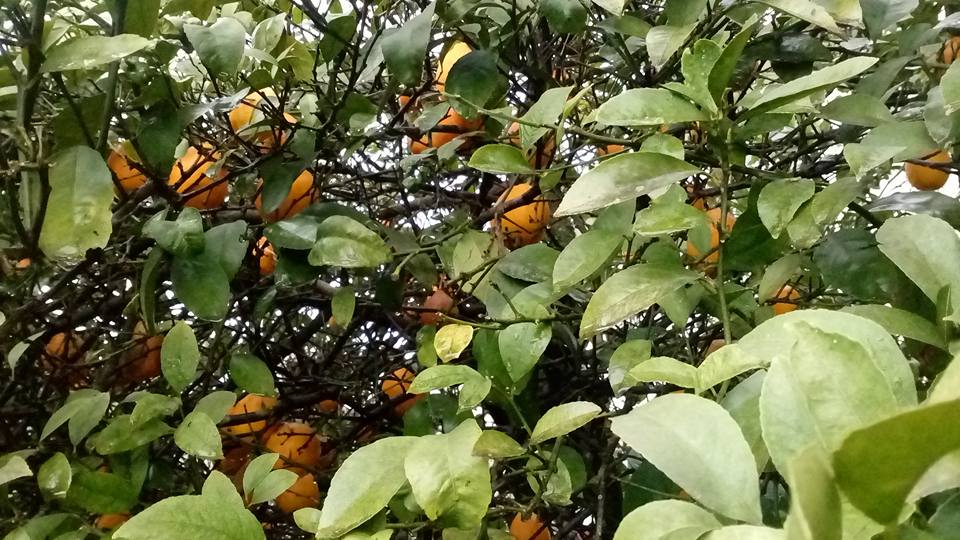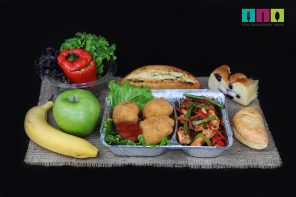Agriculture has both big economic and social functions in Georgia. The sector employs more than half of the country’s work force and for many families, income from agriculture is the only source of their livelihood. At present, interest in the private sector, as well as in the volume of investment is not very high. However, there are many examples of successful projects owing to local and foreign investment.
Here are the main reasons for a favorable investment environment in the agricultural sector of Georgia.
Natural Conditions
Georgian agriculture has favorable natural conditions and resources for agricultural production. We have 22 different climates in the country, including both cold and dry as well as warm and humid. Almost half of the country’s total area can be used as agricultural land. Further, there are naturally favorable conditions for grain, vegetable, fruit and sub-tropical crops.
Almost the whole territory of the country can be considered as fertile land where a variety of agricultural crops are able to be harvested. At the same time, the country is rich in water resources and irrigation systems exist in almost every region.
Investment Direction: Nowadays, cultivars such as nuts or so-called “dwarf nuts,” blueberry, blackberry and pistachio are popular. They are well adapted to the local environment, characterized by their high productivity, selling price and a core market that perfectly satisfies producer interest.
Low Production Costs
Hiring workers in the agricultural sector is quite inexpensive. More than 60 percent of workers are employed in agriculture. Between the country’s industrial sectors, agriculture is the lowest paid overall. In the first half of 2016, the index was GEL 1 per month. This number is much lower as compared to the salaries in most EU countries. Additionally, the local labor force, as a rule, is quite experienced and well aware of the agricultural production process. Most Georgian farmers have been involved in agricultural activities since their childhood and they possess a significant amount of knowledge.
Energy resources required and used in the agricultural production process in Georgia are considered to be low volume. Irrigation water per hectare in eastern Georgia costs GEL 75 and GEL 45 in western Georgia. To compare these prices with those in Europe, it is higher in many European countries: Greece, EUR 73 to 210, Italy EUR 30 to 150, Spain EUR 62 and Portugal EUR 120.
It should also be noted that the purchase or lease of agricultural land in Georgia is also inexpensive and without any limitations.
Investment Direction: wheat, berries, corn and potatoes.
DCFTA with the EU
After the Deep and Comprehensive Free Trade Agreement (DCFTA) with the EU, Georgia can produce agricultural products to meet the required safety and security standards which would then able them to enter the EU market with a zero custom tariff. Additionally, Georgia has an agreement with China, Turkey and the former Soviet countries about tariff reduction. These contracts simplify product export and expand the market for goods produced in Georgia which, of course, is attractive for investors.
In the process of trade with the EU, sector modernization and increasing its efficiency is needed in order for Georgia to meet required standards as well as further enable the entry of foreign companies into the country.
Investment Direction: Bioproduction. Every day, the demand for bio products is increasing both in the EU and on the world market. A wide range of bio products can be produced by Georgian farmers. Relevant legal data about bio production also exists in the country. In 2006, the Parliament adopted the Law on Biological Agricultural Industry which serves to regulate issues concerning the biological agricultural industry.
In Georgia, bio products such as wine, fruit juices, honey, various kinds of fruits (for example, persimmon, which is quite popular in European countries), vegetables, dairy products and others can be produced.
State Supports Agriculture
Financing for the agricultural sector has increased sharply since 2012 and the development of this sphere is one of the top priorities for the country. The state implements various large-scale projects to support agriculture and increase agricultural production.
In the 2017 state budget, agriculture will be financed by GEL 238 million. Of particular note: low interest agro credit (GEL 42 million), viticulture development (GEL 32.4 million), food safety and plant protection (GEL 22.7 million), modernization of ameliorative systems (GEL 49 million), support for agricultural cooperative development (GEL 5.3 million), implementing agricultural research activities (GEL 6.6 million) and agricultural insurance (GEL 5 million).
Of particular note is that Georgia’s agro credit program has financed more than 700 existing and 150 new enterprises at low interest rates since 2013.
Additionally, the state is actively engaged in the following directions: farmer awareness raising and effective agricultural extension services, data collection for market information, information gathering, processing and effective delivering of this information for workers employed in agriculture sector, compiling a farmer register, etc.
Investment Direction: The state actively supports the development of cooperatives and provides certain benefits and preferences for them, especially for multi-functional cooperatives. The cooperatives need to have sufficient financial as well as human resources in order to develop several directions of agricultural production as well as relevant services for farmers.
Agrotourism
In 2016, the number of visitors to Georgia exceeded 3 million while revenue from international tourism amounted to USD 2.16 billion. There are extensive opportunities for tourism development in the country with foreign visitors coming to Georgia year round. They can take part in agro tours and be involved in local agricultural activities or participate in the vintage process, harvest time, learning to make traditional Georgian products and spend time in a unique rural environment which is both new and interesting for them.
When discussing the issue of agro tourism, a look at the list of existing opportunities shows 102 resorts, 182 lands for resorts 2,400 mineral springs, 12,000 historical and architectural monuments (three are included in UNESCO’s Intangible Cultural Heritage of Humanity list), 11 national parks, 41 natural monuments and two protected landscapes.
The Georgian National Tourism Administration offers free training for those who want to start up a business in the agro tourism sphere.
Investment Direction: Village hotels, farms, wine tours, historical monument tours.





